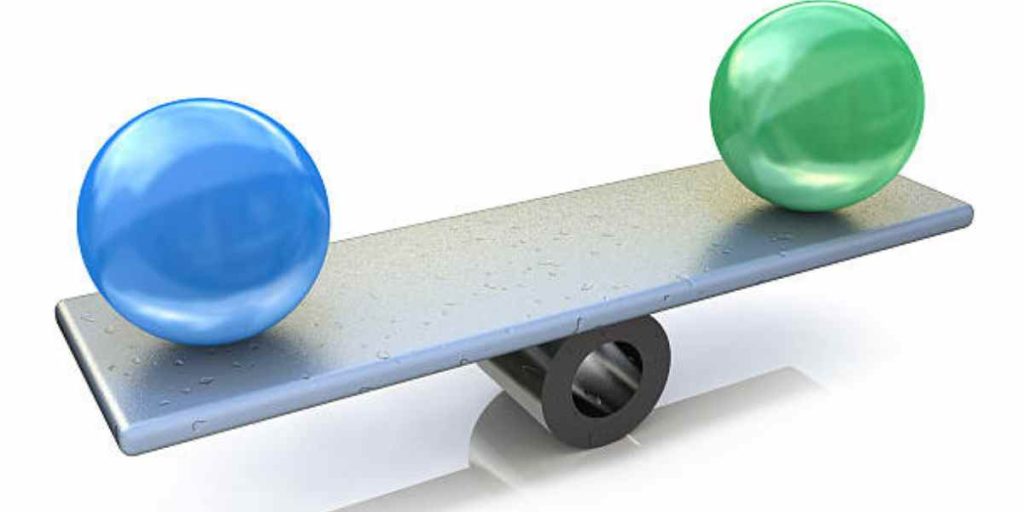The Ultimate Guide to: How Much Does a Golf Ball Weigh
Are you curious about the weight of a golf ball? With the variety of sizes, shapes, and materials used in the creation of golf balls, it can be difficult to determine just how much does a golf ball weigh. Well, wonder no more! In this article, we’ll be exploring the weight of a golf ball, from the different types of golf balls available to the average weight of a golf ball. So, if you’ve ever wanted to know how much a golf ball weighs, keep reading!
Table of Contents
Standard Weight
The standard weight of a golf ball is 45.93 grams or 1.62 ounces. This is the weight for a regulation golf ball according to the Rules of Golf as outlined by the USGA and R&A.
Though the standard weight of a golf ball is 45.93 grams, there is an acceptable range of weights that are considered “standard.” The Rules of Golf state that a golf ball must weigh between 1.620 ounces (45.93 grams) and 1.680 ounces (47.6 grams). Any golf ball that falls within this range is considered a “standard” weight golf ball.
The weight of a golf ball is an important factor in how the ball will travel. Heavier golf balls tend to travel farther and straighter due to their increased momentum. Lighter golf balls tend to spin more, making them more suited for shots that require a lot of spins.
Though the standard weight of a golf ball is 45.93 grams, golfers can choose to use golf balls that are lighter or heavier than the standard weight. However, it is important to note that using a golf ball that is outside of the acceptable weight range will result in disqualification from tournament play.
In conclusion, the standard weight of a golf ball is 45.93 grams, and any golf ball weighing between 1.620 ounces (45.93 grams) and 1.680 ounces (47.6 grams) is considered a “standard” weight golf ball.
Factors that Affect Weight

The weight of a golf ball is a major factor in its performance of the ball. The weight of a golf ball can be affected by a variety of factors, from the manufacturing process to environmental factors.
Manufacturing: The manufacturing process of a golf ball has a major impact on its weight. Different manufacturing processes can create different weights, as some processes may require additional materials or layers to be added to the ball. The size and shape of the core and the dimple pattern can also impact the weight of the ball.
Compression: The compression of a golf ball can have a significant impact on its weight. The higher the compression, the harder the golf ball, and the more weight it will have. Higher compression means the ball will be harder and dense, leading to a heavier weight.
Environmental Factors: Environmental factors such as temperature and humidity can also affect the weight of a golf ball. As temperatures drop, the air pressure drops, which causes the air inside the golf ball to expand. This will in turn cause the golf ball to become lighter, as the air inside the golf ball takes up more space. Similarly, high humidity can cause the golf ball to become lighter, as the moisture in the air takes up more space than the air itself.
Overall, the weight of a golf ball can be affected by a variety of factors, from manufacturing processes to environmental conditions. Understanding how these factors can impact the weight of a golf ball can help golfers choose the right ball for their game, and optimize their performance on the course.
Importance of Weight
Weight has a major impact on the performance of a golf ball, as it affects both the ball’s flight and distance. The weight of a golf ball is determined by its size and the materials used to make it. Heavier golf balls tend to fly farther because they have a higher moment of inertia, which is the measure of a body’s resistance to a change in motion. The higher the moment of inertia, the more stable the ball is when it is hit. This stability helps the ball to travel in a straight line, providing greater accuracy and distance.
On the other hand, lighter golf balls tend to fly shorter distances because they have a lower moment of inertia, making them more susceptible to the forces of wind and gravity. Lighter golf balls also tend to spin more when they are hit, which can affect the accuracy of the shot.
Overall, the weight of a golf ball is an important factor in determining its performance. Heavier golf balls are generally preferred by golfers who need more control and accuracy, while lighter golf balls may be more suitable for golfers who want to hit the ball farther.
Measuring Weight

Golf ball weight is an important factor in determining the performance of the ball, as it affects the ball’s trajectory and spin. To measure the weight of a golf ball, a device called a balance scale is used. The balance scale consists of two pans that are connected to a central arm, which is balanced and suspended from a frame. The scale is calibrated to show the weight of the object placed on either of the pans.
To measure the weight of a golf ball, the ball is placed on one of the pans while a set weight is placed on the other. The set weight is usually a standard weight, such as a one-pound weight or a stack of coins. The ball’s weight is then calculated by subtracting the weight of the standard weight from the total weight shown on the balance scale.
For a more precise measurement, a digital scale can be used to measure the weight of a golf ball. Digital scales are more accurate than balance scales, and some models are even sensitive enough to measure the weight of a golf ball down to the nearest tenth of a gram.
By measuring the weight of golf balls, golfers can find the ball that best suits their game. Different weights can impact the ball’s trajectory and spin, so measuring the weight of golf balls can help golfers find the ball that is best suited to their game.
Other Considerations of How Much Does a Golf Ball Weigh
Weight: The weight of a golf ball is an important factor to consider when choosing a golf ball. Heavier golf balls tend to launch higher and travel further than lighter golf balls. Heavier golf balls also tend to have more spin, which can help with accuracy, particularly when approaching the green.
Compression: The compression of a golf ball is a measure of how much a ball will compress when it is hit. Generally, lower-compression golf balls are softer and provide more spin and control, while higher-compression golf balls are firmer and have a higher launch angle.
Construction: The construction of a golf ball can also impact performance. Multi-layered golf balls are generally more durable and offer better spin and control, while single-layer golf balls are typically more forgiving and launch higher.
Other Features: Other features that can impact performance include dimple pattern, inner core material, and outer shell material. A dimple pattern affects the aerodynamics of the golf ball and affects the trajectory of the ball. The inner core material affects the responsiveness of the golf ball while outer shell material affects the durability of the golf ball.
Overall, there are many factors to consider when choosing a golf ball. Weight, compression, construction, and other features can all affect performance and should be taken into account when selecting a golf ball.
Common Misconceptions

Golf ball weight is one of the most misunderstood aspects of the game of golf. There are many myths and misconceptions regarding the optimal weight for a golf ball, and this is due to the fact that ball weight is ultimately a matter of personal preference. Unfortunately, these misconceptions can lead to poor ball selection, which can negatively affect performance on the course.
The most common misconception is that a heavier golf ball will travel farther. This is not necessarily true, as the ball’s overall weight has no bearing on its flight distance. In fact, a lighter ball can travel farther in some cases due to the higher spin rate it will generate. The spin rate of a ball is determined largely by its construction, as well as its dimple pattern, not its overall weight.
Another misconception is that a heavier ball will have a higher trajectory. This is also false, as the ball’s trajectory is determined by its launch angle and spin rate, not its overall weight. Even if a ball is heavier, it will not necessarily fly higher if it has a low launch angle.
Finally, some people believe that a heavier ball will be more accurate. This is also false, as a ball’s accuracy is determined by
How big is a golf ball read here………
Conclusion
A golf ball typically weighs between 1.62 and 1.68 ounces. The size and weight of a golf ball can vary depending on the type and model. The weight of a golf ball is also an important factor in determining the ball’s performance. With the right weight and size, a golf ball can help a golfer achieve maximum distance, accuracy, and control.
